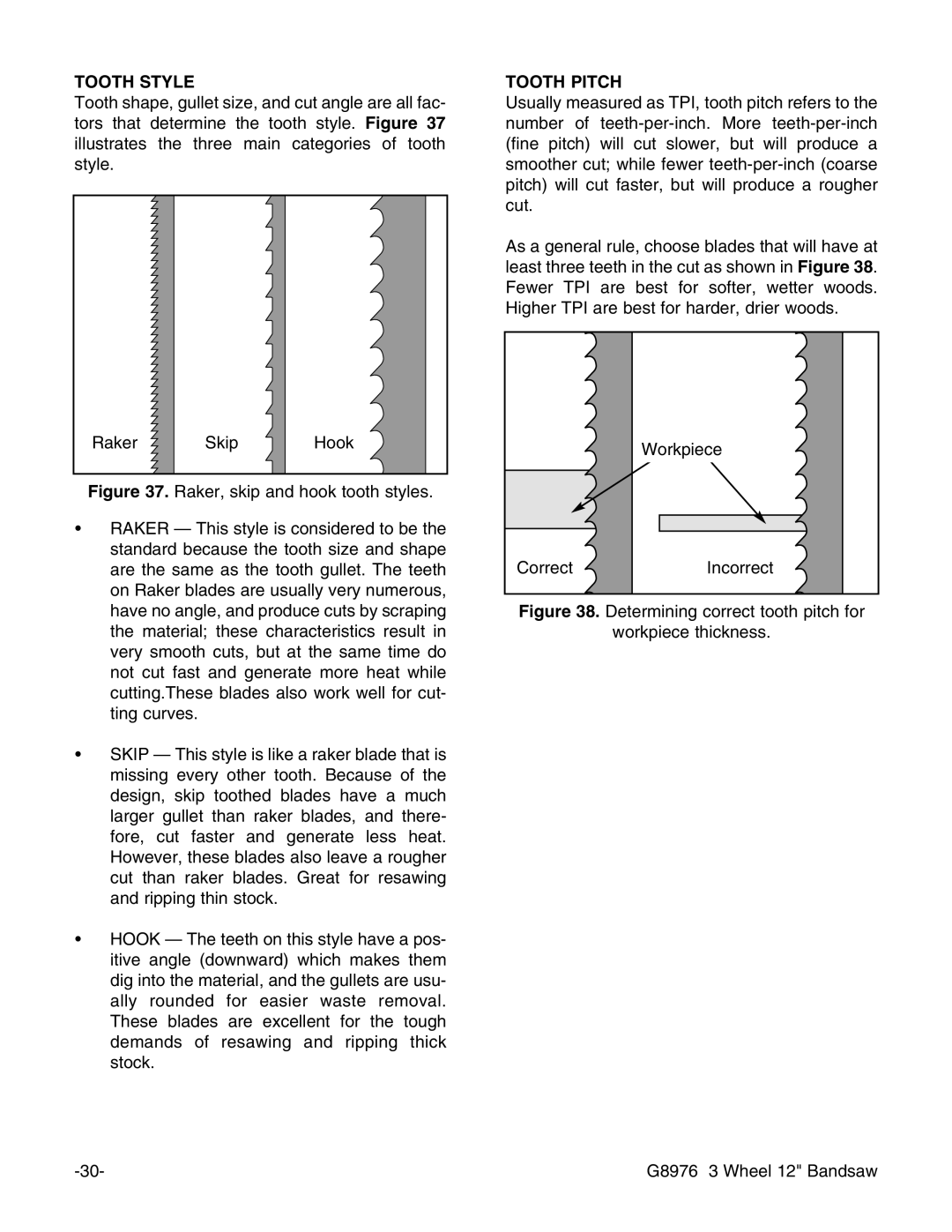
TOOTH STYLE
Tooth shape, gullet size, and cut angle are all fac- tors that determine the tooth style. Figure 37 illustrates the three main categories of tooth style.
Raker SkipHook
Figure 37. Raker, skip and hook tooth styles.
•RAKER — This style is considered to be the standard because the tooth size and shape are the same as the tooth gullet. The teeth on Raker blades are usually very numerous, have no angle, and produce cuts by scraping the material; these characteristics result in very smooth cuts, but at the same time do not cut fast and generate more heat while cutting.These blades also work well for cut- ting curves.
•SKIP — This style is like a raker blade that is missing every other tooth. Because of the design, skip toothed blades have a much larger gullet than raker blades, and there- fore, cut faster and generate less heat. However, these blades also leave a rougher cut than raker blades. Great for resawing and ripping thin stock.
•HOOK — The teeth on this style have a pos- itive angle (downward) which makes them dig into the material, and the gullets are usu- ally rounded for easier waste removal. These blades are excellent for the tough demands of resawing and ripping thick stock.
TOOTH PITCH
Usually measured as TPI, tooth pitch refers to the number of
As a general rule, choose blades that will have at least three teeth in the cut as shown in Figure 38. Fewer TPI are best for softer, wetter woods. Higher TPI are best for harder, drier woods.
| Workpiece |
Correct | Incorrect |
Figure 38. Determining correct tooth pitch for
workpiece thickness.
G8976 3 Wheel 12" Bandsaw |
